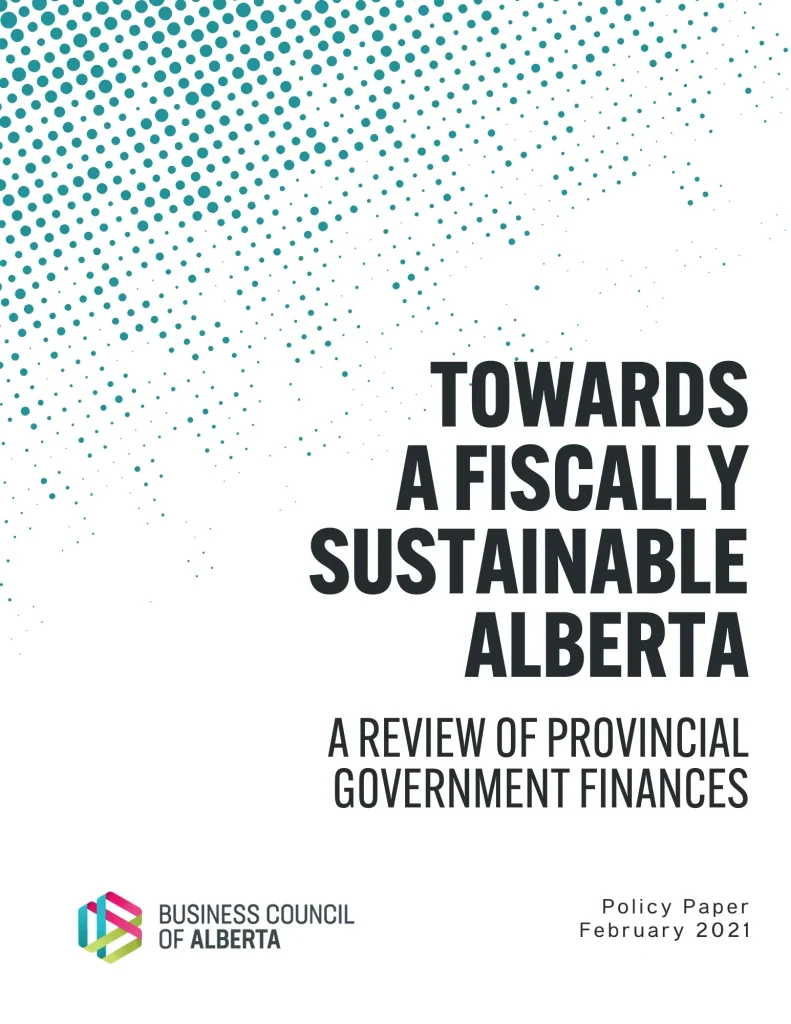Alberta’s fiscal policy is poised for a transformative shift, as Premier Danielle Smith advocates for a groundbreaking proposal that could redefine the province’s financial landscape. This initiative suggests replacing traditional equalization payments with a decentralized tax-collecting system, aimed at empowering Alberta’s authority over its provincial finances. By drawing inspiration from Quebec’s recent discourse on fiscal decentralization, the proposal underscores a burgeoning desire for financial autonomy among provincial leaders. The potential switch could not only streamline tax processes but also invigorate the Alberta economy by fostering a more efficient allocation of resources. As discussions unfold around this pivotal change, stakeholders are keenly assessing the implications for government relations and the future of fiscal management in Alberta.
The financial strategies employed by Alberta are undergoing notable changes under Premier Danielle Smith’s vision for economic reform. This shift involves revising how the province manages its revenue systems, moving towards a model that emphasizes local control over taxation. By potentially eliminating reliance on federal equalization payments, Alberta could reshape its economic strategies and enhance provincial sovereignty. This proposal is reflective of broader trends in regional governance, where provinces seek greater independence in fiscal matters and financial management. As the landscape of provincial finances evolves, the dialogue surrounding fiscal decentralization and its impacts on both the province and the country continues to gain momentum.
Understanding Alberta’s Fiscal Policy and Its Implications
Alberta Premier Danielle Smith’s recent proposal marks a pivotal moment in the province’s fiscal policy. By advocating for a shift from reliance on equalization payments towards a system of fiscal decentralization, Smith aims to empower local governments to take charge of their own financial destinies. This approach resonates with calls for self-sufficient provincial finances, allowing Alberta to harness its unique economic strengths without the constraints often imposed by federal oversight. With the economy shifting and the need for tailored financial strategies more pronounced than ever, this proposal could redefine how Alberta manages its financial resources.
The emphasis on fiscal decentralization represents a broader trend observed in various provinces, as they increasingly seek to navigate their economic landscapes independently. This shift could potentially lead to more efficient tax collection processes that eliminate the complexities of federal transfers. As Alberta explores this new terrain, the implications for provincial finances are profound, inviting discussions on the sustainability and fairness of such a policy. Stakeholders from all sectors will need to examine how these changes affect the province’s ability to fund essential services and maintain infrastructure while also striving to enhance economic performance.
The Role of Equalization Payments in Alberta’s Economy
Equalization payments have been a cornerstone of Canadian fiscal policy, designed to address disparities across provinces. However, Danielle Smith’s proposal challenges the status quo by suggesting that Alberta, traditionally a net contributor to this system, could benefit from a reimagined approach to financial autonomy. By replacing equalization payments with a decentralized tax collection system, Smith envisions a framework where provincial revenues are generated directly, allowing Alberta to invest in its economic priorities without waiting for federal allocations. This could empower Alberta’s economy to flourish through targeted investments and prioritization of local needs.
The prospect of reforming or even eliminating equalization payments has sparked heated debates among economists and policymakers. Critics argue that dismantling such a system could exacerbate regional inequalities, particularly affecting provinces that heavily rely on federal support. However, proponents of Smith’s proposal advocate for a more nuanced understanding of fiscal responsibilities, emphasizing the importance of local control and accountability. As Alberta continues to carve its path, the future of equalization payments and their role within the province’s financial landscape remains a crucial point of contention.
Challenges of Implementing Fiscal Decentralization in Alberta
Implementing a decentralized fiscal policy in Alberta presents significant challenges that must be addressed thoughtfully. As Premier Danielle Smith navigates this complex transition, the province must ensure that essential services, such as healthcare and education, are not adversely affected by the shift away from federal funding. A detailed understanding of provincial finances will be required to balance the benefits of increased autonomy with the need for stable revenue streams that sustain public services. Without careful planning and robust financial strategies, the proposed model risks undermining the very foundations of support for Albertans.
In addition to sustaining service provisions, Alberta’s fiscal decentralization will require a comprehensive analysis of tax structures and local governance capacity. Transitioning from a reliance on equalization payments to a system of decentralized tax collection necessitates considerable adjustments in how taxes are assessed, collected, and allocated. Stakeholders, including local governments, businesses, and citizens, will need to engage in ongoing dialogue to navigate these changes effectively and to build a resilient system that fulfills the province’s economic aspirations.
Stakeholder Perspectives on Smith’s Fiscal Proposal
The proposal by Danielle Smith to overhaul Alberta’s fiscal policy has elicited a variety of responses from stakeholders across the province. Business leaders, who traditionally advocate for streamlined tax processes, have shown interest in the benefits of a decentralized approach. They argue that enabling local governments to retain more revenue could stimulate the economy, leading to job creation and increased investment. Conversely, there are concerns from public sector unions and social advocacy groups regarding the potential risks associated with reduced federal support for vital programs. These groups worry that a move away from equalization payments could lead to cuts in services, disproportionately affecting vulnerable populations.
The diverse perspectives on Smith’s proposal reflect a broader conversation about the balance of power and responsibility between provincial and federal governments. By engaging with multiple stakeholders, including Indigenous communities, municipalities, and civic organizations, Alberta can foster a comprehensive dialogue that addresses the various dimensions of fiscal decentralization. Ensuring that all voices are heard will be critical in developing a policy framework that not only appeals to Alberta’s economic ambitions but is also equitable and just for all Albertans.
Future Implications for Canadian Federalism
Danielle Smith’s proposal to implement fiscal decentralization in Alberta comes at a time of evolving discussions surrounding Canadian federalism. The push for provinces to reclaim more control over their financial affairs may signal a shift in how Canada reconciles regional disparities with national unity. By prioritizing provincial autonomy in financial decision-making, Alberta could lead the way in establishing a new model of governance that other provinces might pursue. This potential shift could provoke a fresh examination of the roles and responsibilities of both federal and provincial governments in addressing the economic needs of diverse regions.
As discussions around fiscal policy continue to evolve, the implications for Canadian federalism are significant. Should Alberta’s model prove successful, it could inspire similar initiatives in other provinces seeking greater financial control. This trend may foster a more competitive economic landscape where regions innovate and tailor their fiscal strategies to meet local challenges. However, it also poses risks for national cohesion as regions diverge in their approaches to revenue generation and public service funding. The future of Canadian federalism may well hinge on how Alberta’s fiscal decentralization unfolds and its ripple effects across the country.
Learning from Quebec: A Comparative Analysis of Fiscal Decentralization
The conversations surrounding Alberta’s potential shift towards fiscal decentralization draw important parallels with recent developments in Quebec. Much like Alberta, Quebec has sought to streamline its fiscal processes by advocating for greater local control over financial resources. Studying Quebec’s experiences provides valuable insights into the implications of such a transition, illustrating how provinces can effectively manage their resources while still fulfilling obligations to their residents. Quebec’s initiatives serve as a case study for Alberta, highlighting both the opportunities and challenges associated with moving towards a more decentralized approach.
By examining Quebec’s success and hurdles in fiscal decentralization, Alberta can glean lessons that will be instrumental in shaping its policies. For instance, Quebec has faced challenges relating to balancing local governance while ensuring equity in funding for services across diverse regions. As Alberta contemplates its future, understanding these dynamics will be essential to promoting a fair and effective fiscal landscape. Emphasizing collaborative governance and equitable resource distribution can help Alberta navigate its fiscal reforms effectively while aligning with broader Canadian federal structures.
Building Consensus: The Need for Collaborative Governance
In the face of significant reforms proposed by Premier Danielle Smith, building consensus among various stakeholders is essential to a successful transition towards fiscal decentralization. Collaborative governance not only fosters trust among provincial leaders and citizens, but also nurtures the involvement of local organizations in decision-making processes. By engaging community members in discussions about fiscal policy, the government can create a sense of ownership and accountability, ensuring that the needs of Albertans are prioritized.
Furthermore, a collaborative approach allows for diverse perspectives to be considered, leading to more equitable financial structures that reflect the region’s unique economic landscape. As Alberta explores this transition, creating platforms for dialogue will be vital. Stakeholders must come together to discuss the potential ramifications of fiscal decentralization on services, investment priorities, and economic growth. A cohesive strategy built on shared goals will empower Alberta to manage its finances effectively while meeting the diverse needs of its residents.
Ensuring Financial Stability Amidst Reforms
As Alberta considers shifting to a decentralized tax collection system under Danielle Smith’s proposal, the importance of maintaining financial stability cannot be overstated. Implementing such changes must involve cautious planning to guarantee that the fundamental fiscal health of the province is preserved. Stakeholders need to understand the risks associated with transitioning away from a reliance on equalization payments, ensuring that the economy does not suffer from volatility during this process. Striking a balance between innovation and stability will be crucial as Alberta ventures into uncharted territory.
Moreover, ongoing assessments of fiscal health and adaptability in response to changes in economic conditions will further bolster Alberta’s financial foundation. Policymakers will need to develop strategies that promote resilience, allowing the province to navigate unforeseen challenges while pursuing its goals of fiscal autonomy. These strategies should account for potential fluctuations in revenue from local taxation, aiming to safeguard essential services and maintain funding for public goods even during economic downturns. The path ahead demands a careful approach focused on both growth and security.
Navigating the Path Ahead for Alberta’s Economic Future
With considerable changes looming on the horizon for Alberta’s fiscal policy, it is essential to craft a robust roadmap for the province’s economic future. The dialogue initiated by Premier Danielle Smith highlights a significant moment in Alberta’s history, where the potential for reform invites innovation and responsibility in financial governance. Alberta’s economic landscape could be reshaped through the implications of fiscal decentralization, creating opportunities for new growth and prosperity tailored to local needs. In this context, the leadership’s resolve to pursue fiscal autonomy will be closely monitored and scrutinized.
As Alberta forges ahead, developing a comprehensive strategy that aligns economic ambitions with the realities of implementation will be pivotal. Engaging a broad spectrum of voices, including experts, businesses, and community leaders, will help foster collaboration necessary for success. The potential benefits of reforming provincial finances under a decentralized model are immense; however, careful consideration of impact on public services, funding mechanisms, and intergovernmental relations will determine the province’s ultimate trajectory in achieving sustainable economic growth.
Frequently Asked Questions
What is the significance of Premier Danielle Smith’s proposal to change Alberta’s fiscal policy?
Premier Danielle Smith’s proposal to alter Alberta’s fiscal policy is significant because it suggests replacing equalization payments with a more decentralized tax-collecting system. This could provide Alberta with greater financial autonomy, allowing for improved provincial finances and reduced reliance on federal transfers.
How could fiscal decentralization impact Alberta’s economy?
Fiscal decentralization, as proposed by Premier Danielle Smith, could positively impact Alberta’s economy by granting the province more control over tax revenues. This shift could lead to more tailored economic policies that reflect local needs, potentially enhancing growth opportunities within the Alberta economy.
What are equalization payments, and how does Danielle Smith’s proposal affect them?
Equalization payments are federal transfers to provinces to reduce fiscal disparities. Danielle Smith’s proposal suggests swapping these payments for a decentralized fiscal approach, which could influence how Alberta manages its provincial finances and interacts with federal funding.
What challenges does Alberta face in implementing the proposed fiscal policy changes?
Implementing the proposed changes to Alberta’s fiscal policy presents several challenges, such as ensuring that essential services remain funded and managing the transition away from equalization payments. Stakeholders may also express concerns about equity and service delivery during this shift.
How does Premier Smith’s proposal relate to the broader discussion of provincial finances in Canada?
Premier Smith’s proposal is part of a wider discussion regarding provincial finances in Canada, emphasizing the roles provinces play in managing resources versus the federal government. As provinces consider fiscal decentralization, this proposal could influence policies in other regions seeking greater financial autonomy.
What implications does Danielle Smith’s fiscal policy proposal have for future governance in Alberta?
Danielle Smith’s fiscal policy proposal could reshape Alberta’s governance by increasing the province’s autonomy in financial decision-making. This shift may set a precedent for other provinces exploring similar fiscal reforms, potentially altering the balance of power between provincial and federal governments.
How can stakeholders prepare for the potential impacts of Alberta’s proposed fiscal reforms?
Stakeholders can prepare for the potential impacts of Alberta’s fiscal reforms by staying informed about the proposal developments, engaging in public discussions, and voicing concerns or support regarding funding priorities and service delivery amidst changes in provincial finances.
| Key Points |
|---|
| Alberta’s fiscal policy is proposed to shift towards decentralization, as suggested by Premier Danielle Smith. |
| The plan may involve replacing equalization payments with a direct tax-collecting system. |
| This proposal is influenced by discussions in Quebec about fiscal decentralization. |
| Decentralization aims to streamline financial processes by removing intermediaries in tax collection. |
| The move reflects a desire among provincial leaders for greater control over financial resources. |
| Potential effects include increased autonomy in financial decision-making for Alberta. |
| Reactions from stakeholders vary, with both support and concern over the policy’s impact. |
| Implementation challenges include ensuring funding for essential services and infrastructure. |
| The reform may influence the dynamics between provincial and federal government relations. |
| The broader debate includes discussions on resource management and equity among Canadian provinces. |
Summary
Alberta fiscal policy is undergoing a transformative potential shift as Premier Danielle Smith proposes to replace equalization payments with a decentralized tax collection system. This move, drawing inspiration from Quebec’s fiscal decentralization discussions, aims to empower Alberta with greater autonomy over its financial resources and reduce reliance on federal transfers. However, stakeholders highlight the need for a careful implementation strategy to ensure essential services remain properly funded. The ongoing discussions about Alberta fiscal policy not only impact the province but could also influence fiscal approaches in other provinces across Canada, making this a pivotal moment in the nation’s economic governance.



